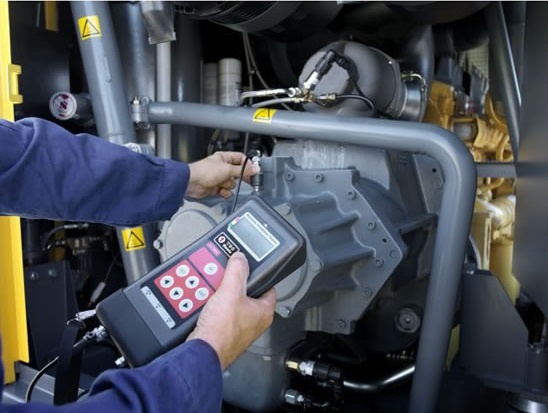We often discuss the benefits of regularly auditing your facility’s compressed air system, and commonly use the terms air assessment and air audits – but are you aware of what each of these means? An audit can reveal a myriad of underlying issues that may be sabotaging compressed air pressure and quality, or consuming excess energy. But a full audit may not be the answer for every plant; rather, a basic compressed air system assessment can offer insights and improvements in the plant’s function and efficiency. Read on to discover the difference between these assessments and audits, and learn some tips about which one might be the best fit for your business.
What’s a Compressed Air Assessment?
A compressed air assessment often referred to as a walk-the-line assessment, or a compressed air survey is a simple method to understand the effectiveness and efficiency of your compressed air system. These compressed air system snapshots are often available from compressor manufacturers at no charge. They typically involve simple recording devices like amperage data loggers and pressure data loggers and typically focus on the supply side of the system. The main purpose of a compressed air assessment is to gain a full understanding of the energy used by the compressed air system, as well as to suggest small, quick adjustments that you can make in order to maximize efficiency. The software used to compile the data can often be used to model performance based on the recorded date. These assessments will often uncover unknown issues to the operator and it can be a great place to start if you have a small facility with a limited budget. Importantly, an air assessment can also reveal a need that warrants a more comprehensive audit to further identify the best solutions to gain efficiency and reduce energy costs.
What’s a Compressed Air Audit?
A full-scale compressed air audit is a much more thorough, in-depth look at your compressor system. An audit won’t disrupt your facility’s operations; rather, it’s performed while the equipment is running. Air audits typically utilize data loggers to measure power (kW), pressure, flow, dew point, temperatures, etc., and are designed to provide a very detailed look at the compressed air utilization within a given system. To gather needed information, data loggers are attached to the air compressor and throughout the compressed air network for a minimum of 7-14 days in order to observe and record system dynamics throughout the normal workweek, as well as the weekends. Results of such audits can provide a good understanding of the actual compressed air usage over a certain time period, identify any compressed air anomalies and help identify ways to improve the overall efficiency of the system. In addition, multiple options are typically available for each audit; they can include air quality audits, maintenance reviews, air leak detection and control, and monitoring and control programs.
Do I Need an Air Assessment or an Air Audit?
Cost is the biggest differentiator between the two; compressed air assessments are usually complementary, while an in-depth audit will have a higher associated cost depending on what is covered. Audits also take longer (in some cases weeks or months) to complete depending on the size of the facility and the desired outcome. Not every facility needs to do a full compressed air audit, as sometimes a simple walk-the-line assessment can satisfy the needs and result in substantial energy savings. We recommend reaching out to your local compressed air provider and discuss which option might be best for your business.
AirAudit have more than eight years’ experience and have conducted more than 200 audits.
Call at: +92 310 562 3329; +92 322 821 0271
Email: info@aiaudit.com.pk


